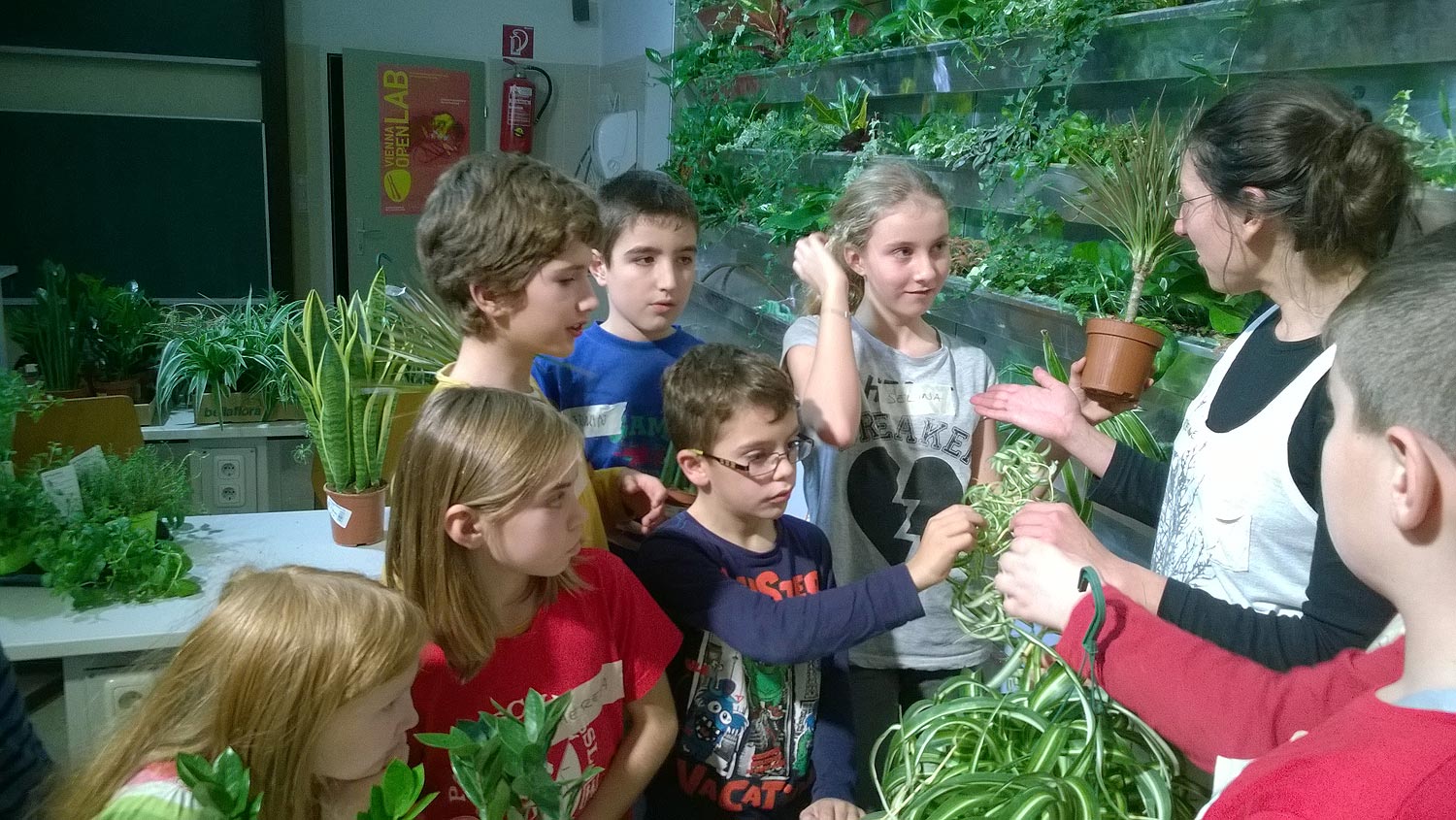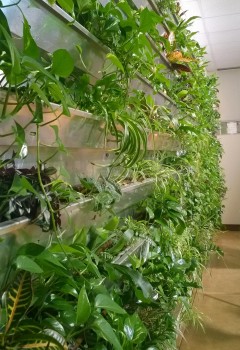Quality of life in cities requires multifunctional system solutions with which energy can be captured, heating and cooling energy consumption reduced, air quality improved and noise abated. As cities are packed with buildings, they are short on green spaces. Façades, roof surfaces and indoor spaces can be used for plants. This will have various positive effects on the quality of buildings and the city will permanently become more livable.
In a project carried out by Vienna University of Technology at a school in Kandlgasse, in Vienna’s 7th district, ultra-efficient systems to kit buildings out with plants are being tested, involving various kinds of plants and substrate in conjunction with photovoltaic modules (PV). The project team analyses how greenery influences the building’s temperature and humidity, the potential for saving energy, indoor air quality and humidity, noise reduction, water retention and urban heat-island effects. Planting the building with greenery is expected to improve its microclimate, lower concentrations of carbon dioxide and particulates, absorb noise and boost the efficiency of the PV modules (inter alia).
Measuring system in school building
In 2015 the school was equipped with various arrangements of plants, substrates etc., indoors and outdoors. Combining PV modules with plants on a building is a novel approach. On hot summer days the modules are cooled by evaporation from the plants, making the modules more efficient. The plants are shielded by the modules, so they grow well. Numerous sensors record the most significant data inside and outside the building; these data are used to compare the performance of structures with and without greenery and the effect of the plants is assessed quantitively.
A key aspect is that the pupils are involved in the project, for example in searching for the most suitable kinds of plant, evaluating data or plotting the amount of energy provided by PV modules. The project will continue until 2018; the initial findings are positive. The U-value has been lowered by 20 % on average. Carbon dioxide concentrations above 2000 ppm have been detected much less often, and the plants have also reduced the noise level.
The experience gathered is being used to work out an effective and low-cost combination from a variety of plants, substrate thicknesses and ways of installing PV modules. The system selecting should be scalable, and suitable both for new starts and for renovating existing buildings.
CONTACT
Azra Korjenic, Institute for Building Construction and Technology, Vienna University of Technology
azra.korjenic@tuwien.ac.at
www.bph.tuwien.ac.at

Azra Korjenic
Institute for Building Construction and Technology, Vienna University of Technology

